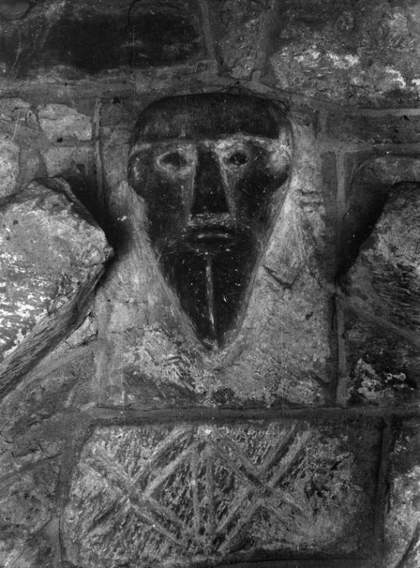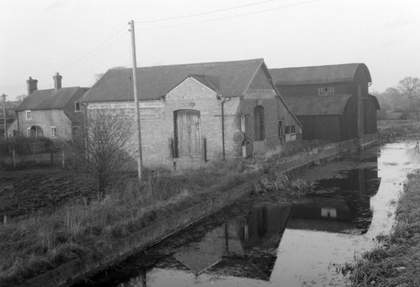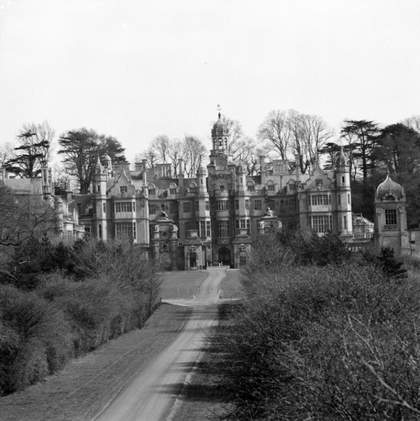As a volunteer for Tate’s Archive my task has been to research John Piper’s photographs and arrange them geographically according to the English and Welsh counties where they were taken. I have been particularly interested in the hundreds of expeditions that John Piper made to capture the huge range of subjects which can be found in his photographic legacy; whether it was climbing the mountains of North Wales, visiting ten churches in a day with John Betjeman, or recording the façades of old public houses and village inns.
One of the earliest of these expeditions took place in August 1939 when Piper and his wife Myfanwy toured West Wales. The highlight of this trip was the time they spent alone among the ruins and landscape of Hafod. This once famous house and estate, a monument to the Picturesque, dated from the 1780s, and was depicted by Turner and Cotman before being destroyed by fire. Hafod was rebuilt in two stages, but in the 19th century was left neglected. It was empty and abandoned when the Pipers came.
The buildings at Hafod were sadly demolished in 1958, but John Piper’s striking photographic record of the house, as it was in 1939, endures in the twenty images of Hafod. The octagonal library and dome, the gothic wing, and Anthony Salvin’s Italianate campanile can be seen in these photographs. The contrast between the bright white building set against the dark forest in the following image is an example of Piper’s characteristic Romantic style and use of chiaroscuro.

John Piper
Hafod 1939
©The Piper Estate
John Piper described his visit to Hafod in an article entitled Decrepit Glory, one of a series he contributed to the Architectural Review in the 1930s and 1940s. He wrote of Hafod: ‘the beauty of the whole place in decay is overpowering’. These words express Piper’s view that ruins should be left to decay naturally.
Earlier in the summer of 1939, Piper toured Shropshire with John Betjeman to gather material for the Shell Guide to the county, which they were to co-author. It is likely that many of the 250 images in the Shropshire series were taken on these first explorations of the county or on subsequent visits soon after World War II when the Guide was published. Piper’s interest in industrial archaeology can be seen in the images of Coalbrookdale and Ironbridge, and his appreciation of early carved stonework observed in the eleventh century tympanum at Stottesdon.

John Piper
Tympanum at St Mary’s Church, Stottesdon 1939‒1950
©The Piper Estate
His Shropshire images range from the ruined Elizabethan mansion at Moreton Corbet to his characteristic affection for neglected subjects and backwaters, for example the images of a disused railway line and of several peaceful sections of the Shropshire Union Canal.

John Piper
The Shropshire Union Canal 1939‒1950©The Piper Estate
Under Piper’s joint (with Betjeman) and later, sole editorship, Shell Guides were published for the majority of the counties. At the time of the publication of the Lincolnshire Guide in 1965, the county was described by the authors Jack Yates and Henry Thorold as ‘the second largest county in England and the least appreciated’. They and John Piper hoped to change that impression, and the Guide was afterwards regarded by Betjeman and Piper as one of the most successful of the series.John and Myfanwy travelled around the county with Thorold, taking many photographs and staying at his home, Marston Hall.
In addition to many of the county’s churches, the scarcely known Harlaxton Manor of the 1830s was among the buildings that Piper wanted to feature in this collection, and he took a number of photographs at the site.
Fortunately, Harlaxton, where Salvin had also worked, was just saved from demolition in 1937. This spectacular house was depicted by Piper in oil and screenprint, becoming one of his ‘Victorian Dream Palaces’ and notable works.

John PiperHarlaxton Manor 1964‒1972©The Piper Estate
John Piper’s photographs give an insight into how he perceived the architectural and landscape heritage of Britain at a particular point in time.
